Navigating Food Labels: Decoding Nutritional Information for Better Choices
Introduction
In the aisles of grocery stores, food labels provide a wealth of information about the products we consume. However, deciphering these labels can sometimes feel like unraveling a complex puzzle. In this article, we embark on a journey to demystify food labels, empowering you to make informed and healthier choices for you and your family.
Why Food Labels Matter
Food labels are your gateway to understanding what you’re putting into your body. They offer insights into the nutritional content, ingredients, and potential allergens present in a product. By mastering the art of reading food labels, you equip yourself with the tools to make choices that align with your health and dietary goals.
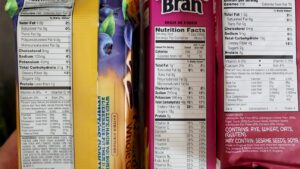
Serving Size and Portions
The serving size listed on a food label is a crucial starting point. It indicates the recommended portion of the product that the nutritional information pertains to. Pay attention to portion sizes, as they directly affect the accuracy of the nutrient values you’re consuming.
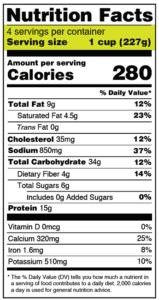
Calories: The Energy Currency
Calories provide a snapshot of the energy a food item supplies. Understanding calorie content helps you manage your overall energy intake. Be mindful of portion sizes to ensure you’re accurately assessing your calorie consumption.
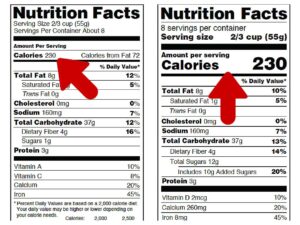
Nutrient Breakdown: Carbs, Fats, and Proteins
The nutrient breakdown reveals the amounts of carbohydrates, fats, and proteins in a serving. Pay attention to the type of fats (saturated, unsaturated) and the presence of dietary fiber. These values influence the nutritional profile and potential health impact of the product.
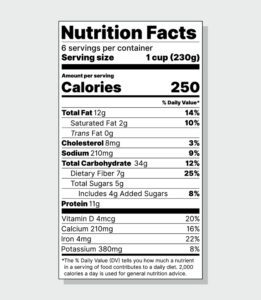
Vitamins and Minerals
Many food labels list essential vitamins and minerals and their respective percentages of the recommended daily intake. Use this information to assess whether a product contributes to your overall nutrient needs.

Ingredients List: Unveiling the Composition
The ingredients list unveils the components of a product, listed in descending order by weight. Be cautious of hidden sugars, additives, and artificial ingredients. Opt for products with shorter, recognizable ingredient lists.

Understanding Additives and Allergens
Food labels often indicate the presence of common allergens like nuts, dairy, soy, and gluten. If you have allergies or sensitivities, carefully scan the label to ensure the product is safe for consumption.
Making Healthier Choices
Navigating food labels empowers you to make healthier choices. Look for products with higher fiber content, lower added sugars, and minimal saturated fats. Choose whole foods and products with fewer processed ingredients.
Beware of Marketing Claims
Be wary of buzzwords like “natural,” “low-fat,” or “sugar-free.” These claims can be misleading, as some products may still contain unhealthy additives. Always cross-reference claims with the actual nutritional information.
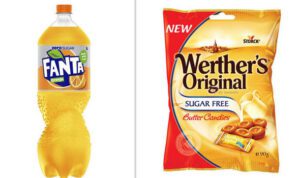
Comparing Products
Use food labels to compare similar products and make better choices. Consider factors such as nutrient density, portion sizes, and overall nutritional value when assessing options.
FAQs
Q: What is a food label?
A: A food label is a government-mandated standardized set of information that is required to be displayed on food packaging. It includes information about the ingredients, nutritional content, and allergens in the food.
Q: What are the different parts of a food label?
A: The different parts of a food label include:
- The product name: This is the name of the food product.
- The ingredients: This is a list of all of the ingredients in the food product.
- The nutritional information: This is a table that shows the nutritional content of the food product.
- The allergens: This is a list of any allergens that are present in the food product.
- The serving size: This is the amount of food that is considered to be one serving.
- The calories: This is the number of calories in one serving of the food product.
- The other nutrients: This is a list of other nutrients that are present in the food product, such as fat, protein, carbohydrates, and fiber.
Q: How can I use a food label to make healthier choices?
A: You can use a food label to make healthier choices by paying attention to the following:
- The ingredients: This is a good place to start when looking for healthier choices. Look for foods that have simple ingredients that you recognize.
- The nutritional information: This is where you can see how much of each nutrient is in the food product. Pay attention to the calories, fat, saturated fat, sodium, and sugar content.
- The serving size: This is important because the nutritional information is based on one serving. If you eat more than one serving, you will be consuming more calories and nutrients.
Q: What are some tips for reading food labels?
A: Here are some tips for reading food labels:
- Start by looking at the ingredients: This is a good way to see how processed the food is.
- Pay attention to the serving size: This is important because the nutritional information is based on one serving.
- Compare similar products: This is a good way to see how different products compare in terms of their nutritional content.
- Don’t be afraid to ask questions: If you are not sure about something on a food label, don’t be afraid to ask the store clerk or the manufacturer.
Q: Where can I find more information about food labels?
A: There are many resources available to learn more about food labels. Here are a few suggestions:
- The FDA website: The FDA website has information about food labeling requirements.
- The USDA website: The USDA website has information about food labeling for meat and poultry products.
- The Center for Science in the Public Interest (CSPI) website: The CSPI website has information about food labeling and nutrition.
Conclusion: Your Guide to Informed Choices
Decoding food labels is your passport to making informed decisions about the foods you consume. Armed with this knowledge, you can confidently select products that align with your health goals and dietary preferences. By navigating food labels with a discerning eye, you embark on a journey of mindful eating that supports your well-being and empowers you to take charge of your nutritional intake.

